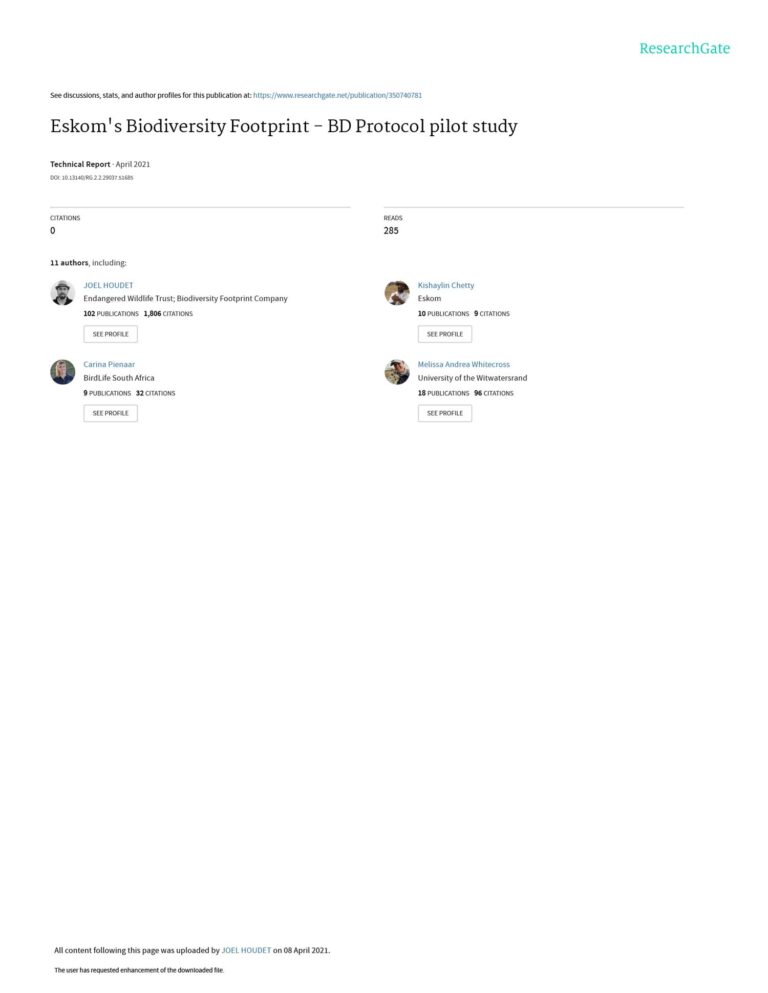
Eskom Hld SOC Ltd (Eskom) has been involved in the development of the Biological Diversity Protocol (BD Protocol) since the launch of the Biodiversity Disclosure Project in early 2018 by the National Biodiversity and Business Network (NNBN), administered by the Endangered Wildlife Trust (EWT). This case study forms part of the pilot testing program managed by EWT and involved undertaking the Biodiversity Footprint assessments of the Ingula Pumped Storage Scheme (“Ingula”) and the Sere wind farm (“Sere”). In essence, Eskom holds a Biodiversity Footprint of 14 013,43 ha at Ingula of which 7 223,99 ha eq. constitute its Positive Biodiversity Footprint (or 51,55 % of the total Biodiversity Footprint of Ingula) and 6 784,44 ha eq. its Negative Biodiversity Footprint (or 48,45 % of the total Biodiversity Footprint). At Sere, Eskom holds a Biodiversity Footprint of 7 394,46 ha of which 5650,98 ha eq. constitute its Positive Biodiversity Footprint (or 76,42 % of the total Biodiversity Footprint of Sere) and 1 743,48ha eq. its Negative Biodiversity Footprint (or 23,58 % of the total Biodiversity Footprint). In the end, the consolidated Biodiversity Footprint of Eskom stands 21 407,89 ha, of which 60,14% is its positive Biodiversity Footprint. With active ecosystem management and restoration measures, and no further vegetation clearance, it is expected that the condition of many ecosystem types would improve at both Ingula and Sere, hence potentially improving Eskom’s Biodiversity Footprint in the future. This pilot study has been very successful overall, especially in accounting for impacts on ecosystems. The developed ecosystem impact inventory was comprehensive for both Ingula and Sere and the whole set of accounting journal entries and associated Statements of Ecosystem Performance and Position have been produced. For species, while materiality assessment processes could be completed at both Ingula and Sere, comprehensive sets of information regarding current and target population / habitat sizes were only available for a subset of material species (5 out of 9 at Ingula, 2 out of 7 at Sere). Beyond helping Eskom with biodiversity performance reporting and disclosure, this pilot study sets a baseline to monitor change in ecosystem extent and condition and the population / habitat size of species over time, in response to management decisions and / or various biodiversityrelated activities, thus enabling the integration of evidence-based data in management and budget planning for both sites. It also supports the expansion of biodiversity footprinting to all of Eskom’s sites within its direct operations, at very limited costs, especially for impacts on ecosystems.